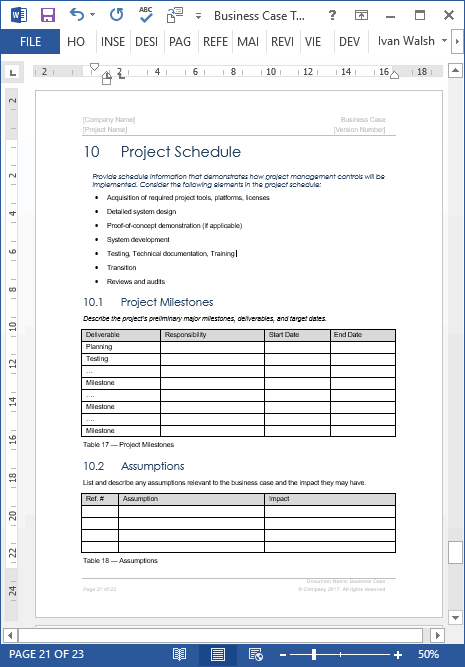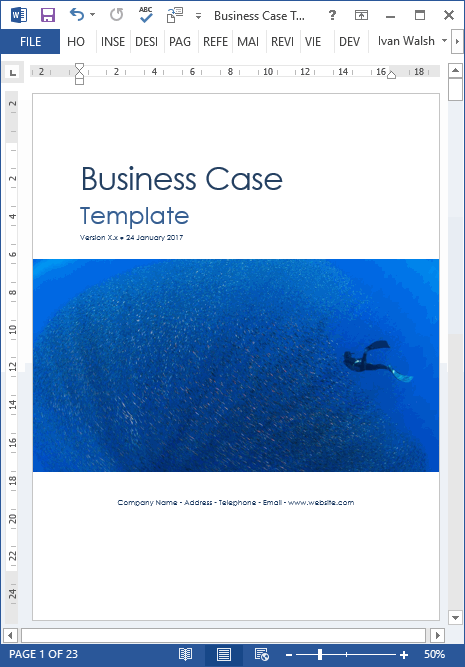Business Analysis Templates
Sample Business Case Template
You can use this sample business case template to document the justification for undertaking of project, based on estimated costs against benefits to be gained, which will be offset by risks.
1. Business Case Purpose
Discuss how the Business Case is used to document the justification for undertaking a project. This is usually based on the estimated costs (e.g. development, implementation, operations, and maintenance) against the anticipated benefits to be gained and offset by risks.
2. Business Case Derivation
You can derive the Business Case from the following:
- Project mandate and Project Brief
- Project Plan
- Users
- Executive
- Risk Register
3. Business Case Quality Criteria
Identify the quality criteria used to assess the Business Case:
- Reasons the project must be consistent with the corporate strategy
- Why the Project Plan and Business Case must be aligned
- What he benefits should be identified and justified
- How benefits will be realized
- Examples what defines a successful outcome
- Identify the preferred business options
- For external procurement, identify the preferred sourcing option is, and explain why
- Identify how funding will be obtained
- Include non-financial and financial criteria
- Include operations and maintenance costs
- Identify project costs and risks
- How it conforms to accounting standards
- Identify the major risks faced by the project, together with any responses
4. Executive Summary
In the Executive Summary, identify the key points in the Business Case, including important benefits and the Return On Investment (ROI).
5. Business Case: Reasons
Identify the reasons for undertaking the project. Explain how the project will enable us to realize corporate strategies and objectives.
6. Business Case: Options
Identify the recommendations that form the base business options, such as:
- Take action
- Take some action
- Take no action
7. Business Case: Negative Impacts
Discuss outcomes which may be perceived as negative by stakeholders.
Negative impacts are consequences of an activity whereas a risk may not occur. For example, a decision to merge two business units onto a new office may have benefits (e.g. cost reductions) and Negative impacts (e.g. less productivity during merger).
8. Business Case: Timescales
Discuss how the project will run and the time period over which the benefits will be realized.
This information will be used to help coordinate planning activities for Project Plans, Stage Plans and Benefits Review Plans.
9. Costs
Provide a summary of the project costs (see: Project Plan), operations and maintenance costs, and their funding arrangements
Provide the project costs for Stage 1, Stage 2, and Stage 3:
- Estimate Cost
- Actual Costs
- Tolerance +/-
- Overall Project Costs
10. Business Case: Investment Appraisal
Compare the benefits and negative impacts to the total project costs and ongoing operations and maintenance costs.
Use techniques such as cash flow statement, ROI, net present value, internal rate of return and payback period to generate these figures.
11. Business Case: Risks
Identify the risks associated with the Business Case. Use an Excel spreadsheet and create a table to create a Risk Issue Log:
- Risk#
- Description
- Impact
- Probability
- Risk Response
Your aim is to define the project value as an investment. The appraisal must address how the project will be funded and justify the investment.

Learn more about these business case templates here

